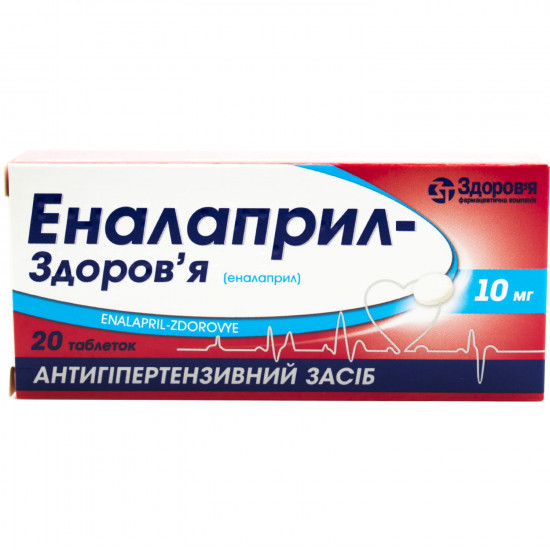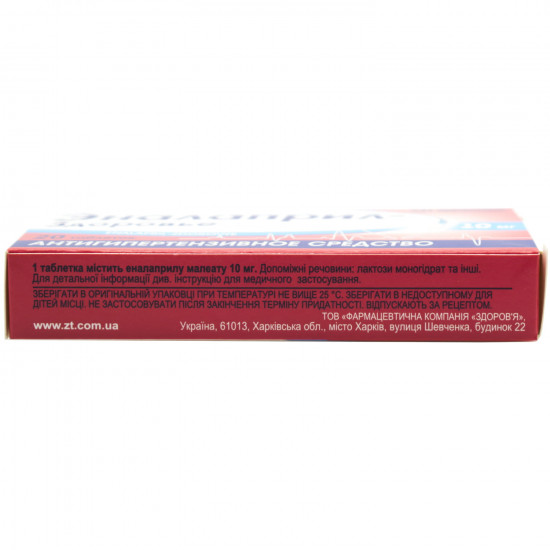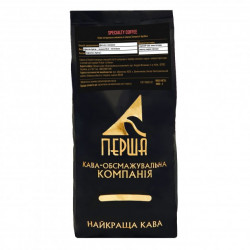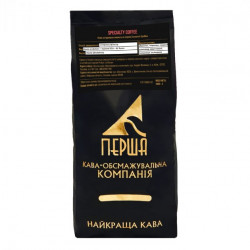



- Stock: In Stock
- Model: 182535
0% Customers recommend this product
-
5 Awesome0%
-
4 Great0%
-
3 Average0%
-
2 Bad0%
-
1 Poor0%
Reviews Over Enalapril-Zdorovye tab. of 10 mg No. 20
- (0)
Total Reviews (0)
click here write review to add review for this product.
Report this review.
Description
Pharmacological properties
Enalapril ((2s)-1-[(2s)-2-[[(1s)-1 (ethoxycarbonyl) - 3 - phenyl-propyl] amine] propanoit] pyrrolidine-2-carboxylic acid (7) - butandionat) — antihypertensive drug, inhibitor apf. reduces concentration in blood of ii angiotensin and Aldosteronum, increases the level of renin, prostacyclin and the endothelial relaxing factor, interferes with bradykinin disintegration, the sympathetic department of the autonomic nervous system oppresses. as a result gradually decrease hell, opss, post- and preload of heart, pressure in the right auricle and in a small circle of blood circulation, the expressiveness of a hypertrophy of a left ventricle decreases, the syndrome of "jamming" of pulmonary capillaries disappears, the tolerance to physical activity increases, glomerular filtration in kidneys improves that interferes with development of a diabetic nephropathy. does not influence metabolism of glucose, lipoproteins and sexual function.
by Nezavisismo'smeal about 60% of enalapril it is quickly soaked up from a digestive tract; the maximum concentration in blood serum is reached during 1 h. Is exposed to biotransformation in a liver with formation of enalaprilat — high-specific, it is long the operating APF inhibitor which maximum concentration in blood serum is reached in 4 h. Enalaprilat easily passes through gistogematichesky barriers, excepting GEB, gets through a placenta. Elimination half-life of enalaprilat — about 11 h. Linking of enalaprilat with proteins of blood plasma makes 50–60%. It is excreted mainly by kidneys (20% — in the form of enalapril, 40% — in the form of enalaprilat), 33% are removed through intestines (6% — in the form of enalapril, 27% — in the form of enalaprilat). During 24 h 95% of medicament are removed. At elderly people the hypotensive effect is more expressed and long. In a renal failure enalaprilat collects in an organism, in an abnormal liver function — transformation of enalapril into enalaprilat is sharply broken.
Indication
Ag of any stage, including renovascular; chronic heart failure, dysfunction of a left ventricle; diabetic nephropathy.
Use
Inside, irrespective of meal. the initial dose for adults depends on expressiveness ag and usually makes 5 mg of 1 times a day. if necessary the single dose is gradually raised to 20 mg by 1–2 times a day. the maintenance dose usually makes 10–20 mg a day; the maximum daily — no more than 40 mg in 1–2 receptions.
Contraindication
Hypersensitivity to inhibitors apf, the period of pregnancy and feeding by a breast, age up to 14 years, a Quincke's disease in the anamnesis, a bilateral stenosis of renal arteries or a stenosis of an artery of the only kidney, a state after renal transplantation, primary hyper aldosteronism.
Side effects
Most often (about 2-3% of cases) note a headache, dry cough, dizziness, fatigue, an asthenia. less than 2% of patients have an arterial hypotension, orthostatic reactions, tachycardia, a faint, nausea, diarrhea, spasms, allergic reactions, a Quincke's disease; even more rare — renal failures, a renal failure, an oliguria, a hyperpotassemia, a hyponatremia; exclusively seldom — a depression, drowsiness or insomnia, a bronchospasm, an interstitial pneumonitis, bronchitis, cholestatic hepatitis, increase in level of creatinine, urea and activity of transaminases in serum of blood, disturbance of taste, sight, sense of smell, sonitus, a glossitis, thrombocytopenia, a leukopenia, an agranulocytosis.
Special instructions
At use of enalapril the arterial hypotension can arise, diets with limited consumption of salt are more often against the background of reduced otsk at extensive surgeries, as a result of therapy by diuretics, during the carrying out dialysis, diarrhea and vomiting. at patients with a severe form of heart failure, especially in the presence of renal failures, combined use of enalapril and diuretics can cause arterial hypotension with increase in content of urea and creatinine in blood serum. in these cases the treatment by enalapril should be carried out under medical control, especially at change of a dose of enalapril or diuretic.
should appoint byWith care enalapril to patients with an ischemic heart disease, diseases of vessels of a brain and obstruction of an output path of a left ventricle at which sharp decrease in the ABP can lead to a stroke or a myocardial infarction. Use of enalapril for the patients who are on a hemodialysis with use of dialysis membranes of AN69 in connection with risk of development of anaphylactoid reactions is not recommended.
withIn heart failure, a diabetic nephropathy and also to patients of advanced age treatment by enalapril it is necessary to begin with the minimum dose 2.5 mg/days with posleduyeshchy correction under control of the ABP. The care is necessary during the work with vehicles or at the activity requiring special attention as dizziness, especially in an initiation of treatment is possible.
Interaction
Potentiation of effect is noted at a concomitant use with diuretic and antihypertensives, opioid analgetics, anesthetics and alcohol. at use to thiazide diuretics there is a reduction of expressiveness of symptoms of the hypopotassemia induced by diuretic. prescribing of enalapril and kaliysberegayushchy diuretics (Spironolactonum, Triamterenum, amiloride), the nutritional supplements and salts containing potassium, especially at patients with a renal failure can lead to a hyperpotassemia. enalapril can reduce clearance of lithium. at patients with unstable function of the kidneys receiving npvp after the beginning of use of enalapril the decrease in their effect and further deterioration in function of kidneys is possible. at simultaneous use with immunodepressants the risk of myelosuppressive action increases.
Overdose
Is shown by arterial hypotension. presence of the profound arterial hypotension demands medicament withdrawal and performing symptomatic therapy. the patient should be laid and, if necessary, in/in to enter 0.9% chloride sodium solution. enalapril can be removed from system circulation by means of a hemodialysis. use of dialysis membranes of an69 in connection with risk of development of anaphylactoid reactions is not recommended. existence in the anamnesis of instructions on cases of a Quincke's disease is considered the increased risk of its development at treatment by enalapril. usually hypostasis disappears without special treatment at medicament withdrawal. the positive effect is rendered by antihistaminic drugs. in case of localization of hypostasis in the field of language or a throat it is necessary to enter quickly p / to epinephrine 1:1000 solution (0.3-0.5 ml).
Storage conditions
B the dry, protected from light place.
Specifications
| Characteristics | |
| Active ingredients | Enalapril |
| Amount of active ingredient | 10 mg |
| Applicant | Health |
| Code of automatic telephone exchange | C09AA02 Enalapril |
| Interaction with food | It doesn't matter |
| Light sensitivity | Not sensitive |
| Market status | Generic-generic |
| Origin | Chemical |
| Prescription status | According to the prescription |
| Primary packing | blister |
| Producer | TOB PHARMACEUTICAL COMPANY HEALTH |
| Quantity in packing | 20 tablets |
| Release form | tablets for internal use |
| Route of administration | Oral |
| Sign | Domestic |
| Storage temperature | from 5 °C to 25 °C |
| Trade name | Enalapril |




















